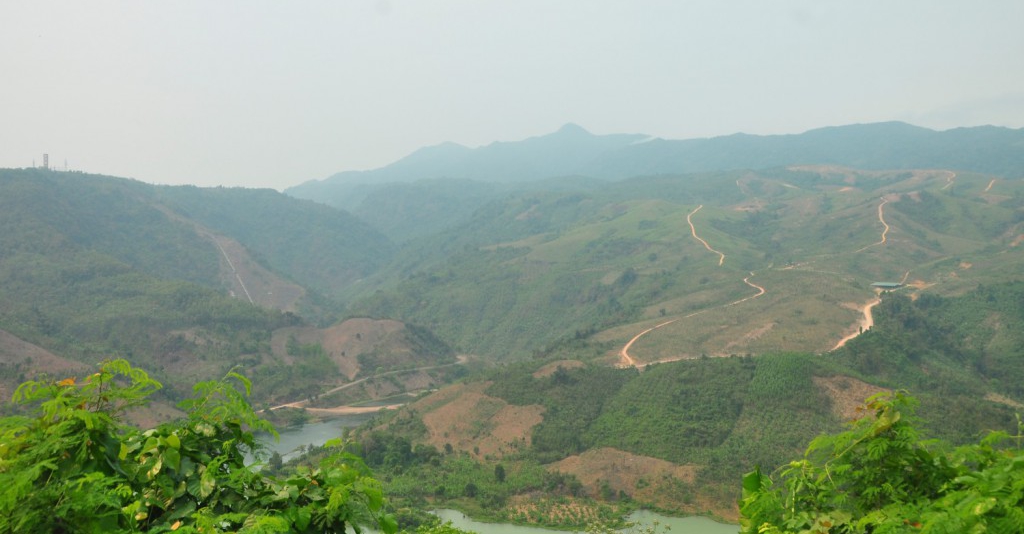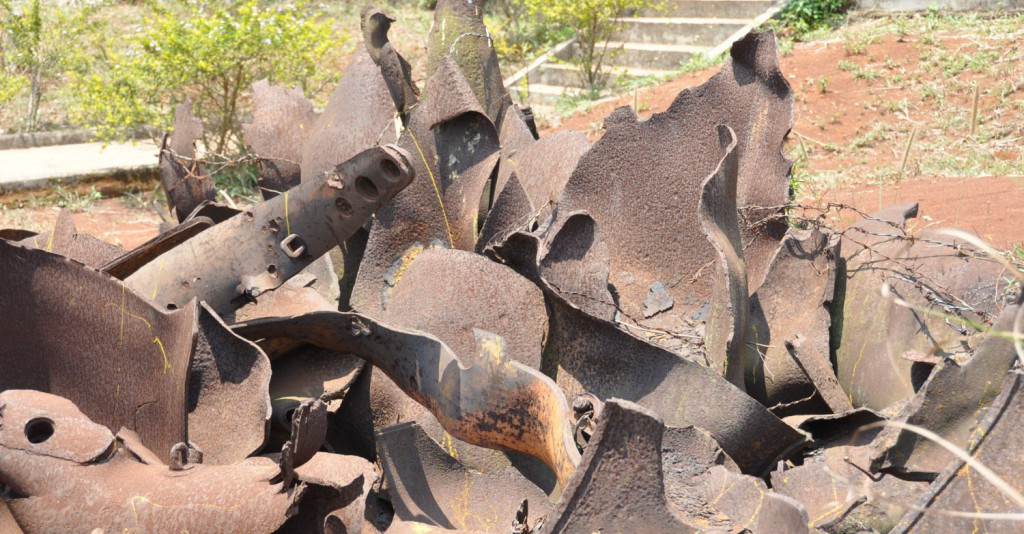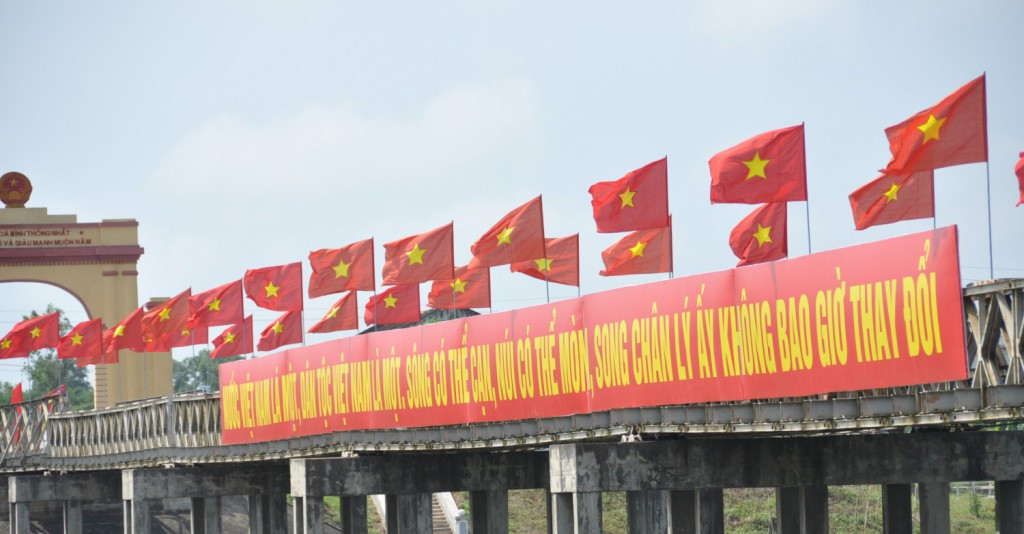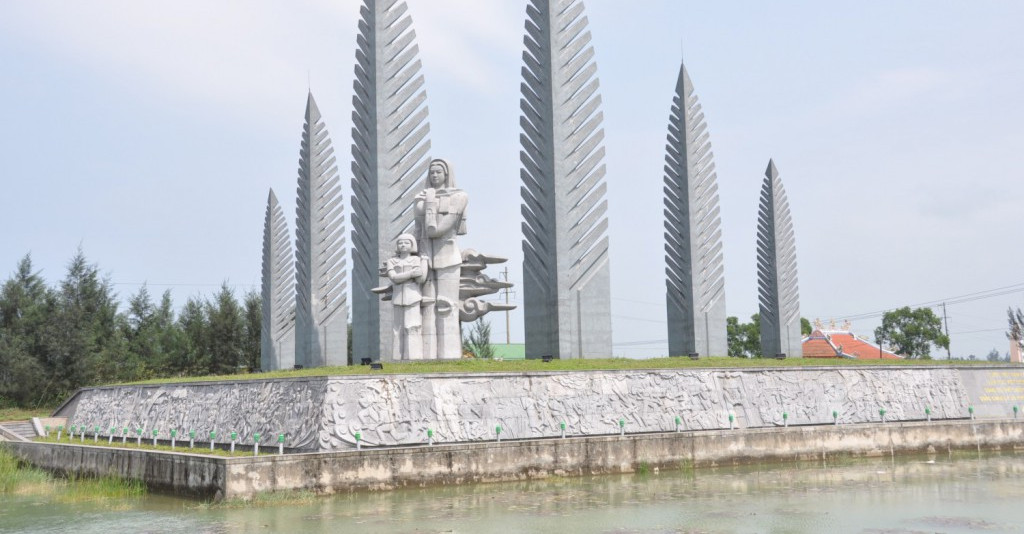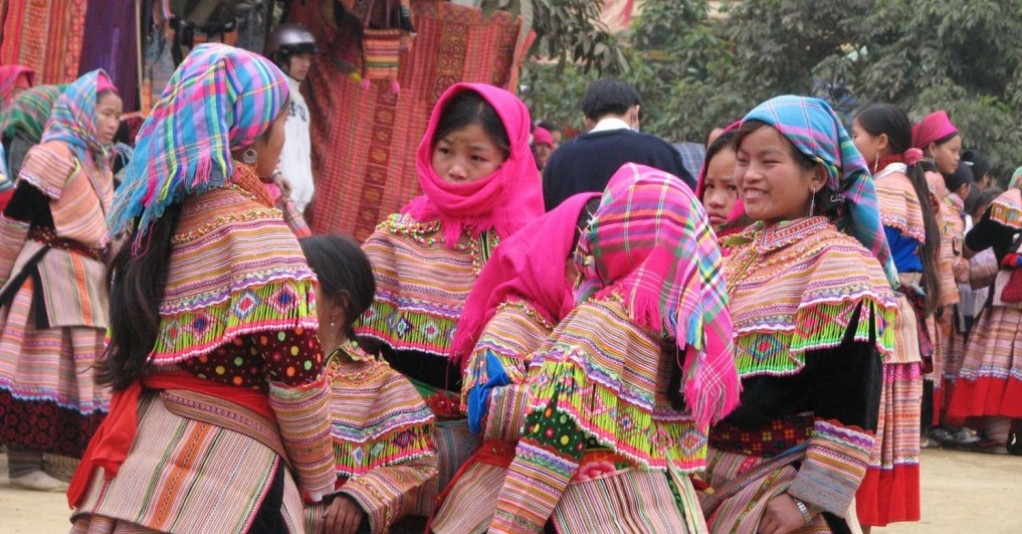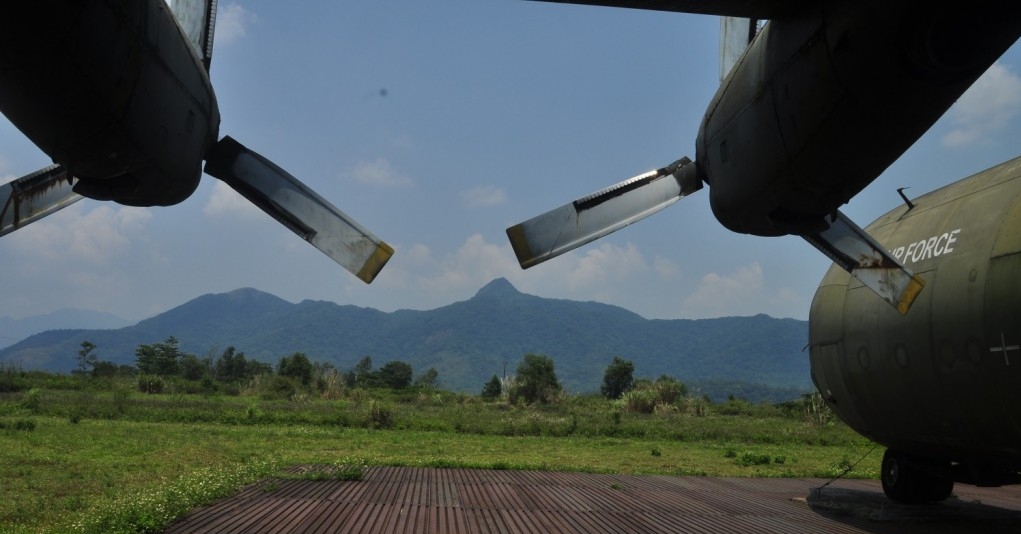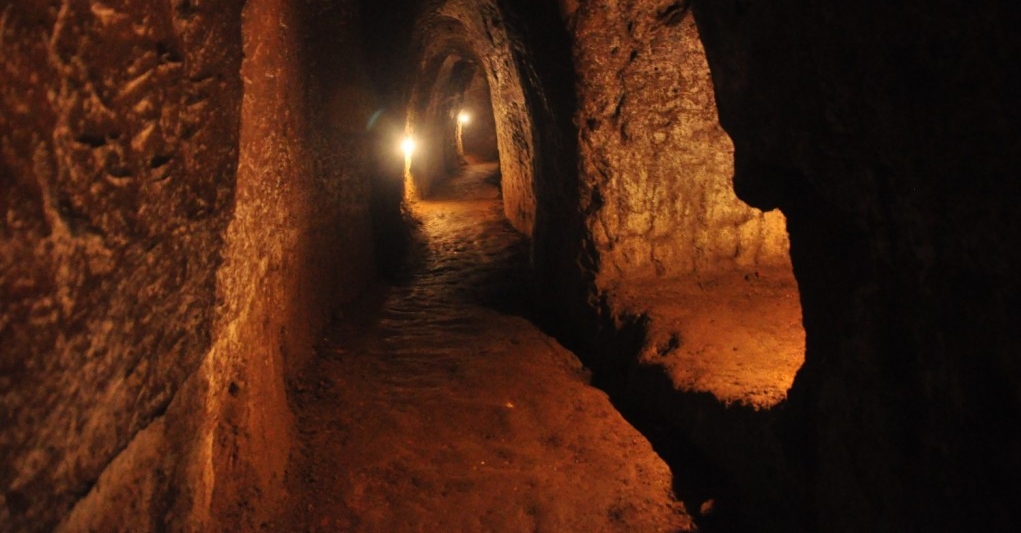VIETNAM’S LEADING BATTLEFIELD TOUR OPERATOR
Join us for a journey through the history of Vietnam conflicts.
FROM HUE TO THE DMZ
From Hue to the DMZ
JULY 4, 2014 ~ ATRAVELTROVE
Note to self: DMZ = Demilitarized Zone
I am ashamed to say that I had never heard of DMZ until I started planning for this trip. When I was researching online, I came across plenty of ‘DMZ tours’ from Hue and some of them were on motorbikes. So I thought DMZ was some kind of an adventure tour. Yup. Total fail.
It wasn’t until quite a bit later I realized what DMZ was. A friend told me to check out the underground tunnels in central Vietnam instead of the Cu Chi tunnel in Ho Chi Minh City. As always, I turned to Google and a lot of links regarding Vietnam War appeared on my screen. That’s when I finally put two and two together.
Hue, which is located in Central Vietnam, is in close proximity with where the border between North and South Vietnam used to be. This border area was designated a demilitarized zone, DMZ, where all military activities must cease. When I said ‘in close proximity’, it’s relative to other major, tourist-destination cities. The actual distance between Hue and the DMZ is about 100 kilometers, which translates to about three hours drive.
I also have to admit that I knew practically nothing about the Vietnam War prior to this trip. But I love histories – anything with stories, really. So I knew I had to explore the DMZ. I dragged persuaded Evelyn, my friend and travel buddy, to go with me. Well, okay, this time it was probably more like ‘dragged’ than ‘persuaded’.
To explore the DMZ, the best way in my opinion, is to go with a tour because 1) there are a lot of driving involved and I don’t drive and obviously not familiar with the roads, and 2) I needed a guide to fill up the gap in my knowledge regarding Vietnam War.
I chose to go with Mr Vu from Annam Tour because his tour has been consistently well-rated and also he’s a historian! He conducts private tours, which means it is rather expensive. But I much prefer this than a bus tour; we can spend as much or little time as we want at each site and there’s no waiting around for other passengers.

Mr. Vu is giving a lecture in the car
Also, I’d be more comfortable asking questions, which otherwise I might not have done at all in front of other people. I’m just very very shy around strangers.
All DMZ tours from Hue started very early. We were picked up from our hotel at 6.30 am. I hardly ever woke up that early, certainly not during my workdays, but I was so excited so it wasn’t a problem. We were driven to Dong Ha, where Annam Tour is based, to pick up Mr Vu. Apparently Dong Ha is the closest major city to the DMZ. The drive took about two hours, and when the driver stopped to buy his breakfast, I spotted this:

Mr Vu is a passionate historian and a natural teacher. With two girls with no connection nor knowledge of the war as his guests, he started off by giving us the background story of the DMZ. The border that separated North and South Vietnam is often called the 17th parallel. It refers to the latitude – 17 degrees north of the equatorial. However, the border did not exactly lie at that parallel. Rather, it followed the Ben Hai river which made for a natural border as it extends all the way from the Vietnamese border with Laos to the South China Sea.
The DMZ, like other DMZs around the world, was supposed to be temporary until an election could be held for people on both sides to decide on their own fate. Unfortunately this never happened. A few years later the Vietnam War broke out.
Our first stop of the day was the Hien Luong Bridge, which crossed over the Ben Hai river. When the DMZ was first established, people were given the option to choose which side they wanted to be on: North or South. And this bridge was left opened for people who wanted to cross to the other side, no question asked. I suppose the reasoning behind it was something like this: it was in the DMZ → no military activity was to take place → people who crossed had no military-related intention at all. However, according to Mr Vu, spies from both sides used the bridge to enter the other side. Probably both sides realized it would be a convenient entry point for their spies, so they readily agreed to the free-crossing.
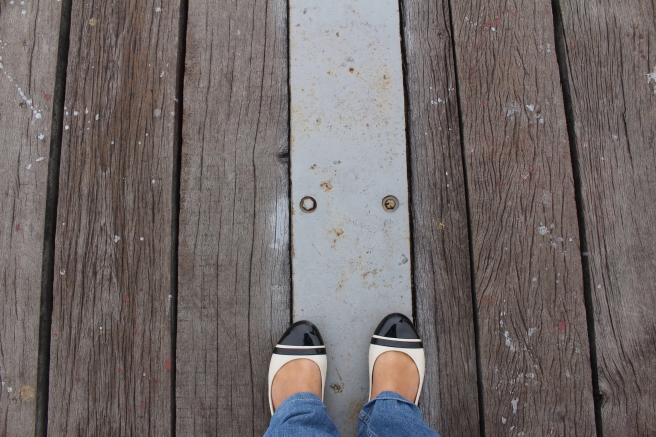
The exact midpoint of the bridge, so half of me was in the North and the other half in the South
We were dropped off at the south side of the bridge. There is a Reunification Monument; according to Mr Vu, the six tall structures represented the leaves of coconut trees, which are abundant in the Mekong Delta region of South Vietnam. The lady and her children were looking towards the North, which was supposed to represent the people’s longing to be reunited with the North. Mr Vu said there’s another meaning to this statue. The lady was waiting for her husband who had been sent to the Soviet (which was located northwards) for military training and never came back because he hooked up with beautiful Eastern European girls. Mr Vu said this with such a straight face I still can’t quite figure out if he’s joking or if this actually happened.
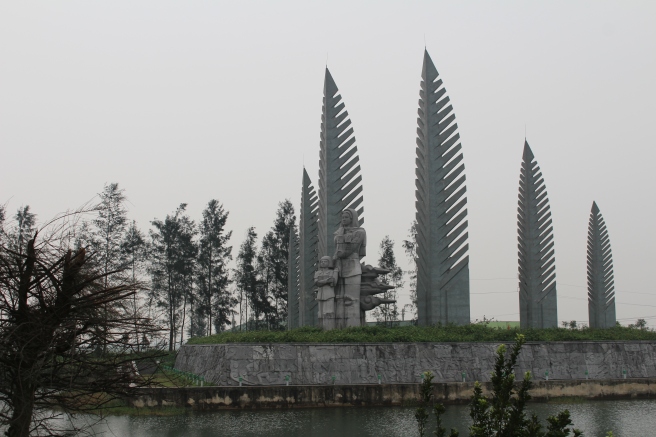
Reunification Monument
The bridge, as with many other Vietnam War sites, was badly bombed during the war and has been restored several times. The bridge only accommodates human traffic; right next to it is a highway for vehicles.
At the north end of the bridge, there is a giant Vietnamese flag. The North won the war, so this flag used to be a North Vietnamese flag back in the days. I suppose it had to be huge in order to be visible from the other side of the river?

Probably the biggest flag I’ve ever seen. The base was adorned with mosaics depicting the war and the victory celebration.
There are also huge loudspeakers at the North side of the river facing the South. Mr Vu said that back in the days, the speakers played propaganda for the people in the South, to promote reunification between the two sides and to garner support for the North who was ostensibly fighting for it.
Across the road there was a wooden house which used to function as headquarter for the International Control Commission. It comprised of officers and troops from Canada, Poland and India, and was supposedly neutral. Their tasks were to oversee the withdrawal of the French from Vietnam and subsequently, the election. Needless to say, they were unsuccessful on the latter.

Former headquarter of the International Control Commission
Our next stop was the Vinh Moc tunnels. It used to be a fishing village which had the misfortune of being located in the border between North and South. Instead of evacuating somewhere else, the villagers dug tunnels and relocated underground.
These tunnels are pretty extensive with multiple entrances. It mainly functioned as living quarters, so there are adequate space to move around. All of us could stand comfortably, although if you’re very tall then you might have to stoop. It is fairly easy to explore these tunnels and definitely nowhere as claustrophobic as the Cu Chi tunnels (Cu Chi tunnels were primarily for military purpose).
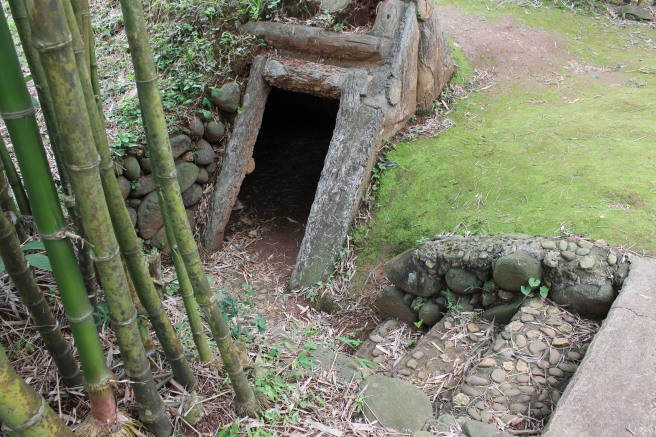
One of the entrances to the tunnels,which obviously has been modified to make it easier for tourists to visit.
Inside, there are tiny recesses along the wall which functioned as living quarters for the families. There are no door whatsoever to these quarters; I suppose the only privacy available was one afforded by the darkness. There are several bigger rooms inside the tunnels which functioned as meeting rooms and make-shift hospital. Today, there are life-sized dummies inside some of these rooms for, I suppose, illustrative purpose.
 There are lamps like this along the tunnels, but it can still get pretty dark at some places, so don’t forget to bring torchlight!
There are lamps like this along the tunnels, but it can still get pretty dark at some places, so don’t forget to bring torchlight!
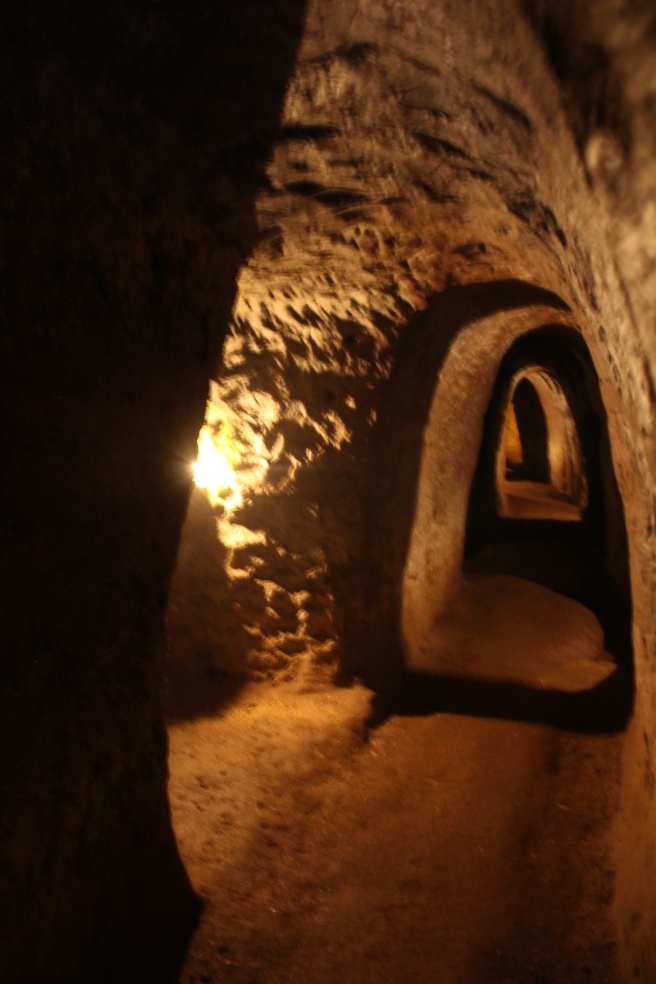
Inside the tunnels – sorry it is blurry!
The tunnels were made up of 3 levels, each serving different function (living quarters, storage, and I can’t remember what the last one was). There were air vents for ventilation and cooking; these opened up to the ground surface and were carefully concealed by hut-like structure built on top of it. The design of the tunnels is ingenious and the fact that it has survived the war and is still pretty much intact today is just amazing.
During the war, it was suspected that weapons and supplies for the North army were channeled through these tunnels. Therefore to break the supply network, the area was heavily bombed by the South and its ally, the US. However, quite miraculously, the tunnels never sustained any significant damage.

Bomb crater inside this complex. There’s also an exhibit showing various unexploded bombs that landed here.

One of the entrances is right by the sea. It is said that supply deliveries for the North were received from here.
The villagers were not always cooped up inside the tunnels. They still went above ground to tend to their land (or whatever was left of it). Whenever bombers flew by, they would jump inside the drain for cover.
Tour detail
DMZ tour from Hue

.jpeg)



